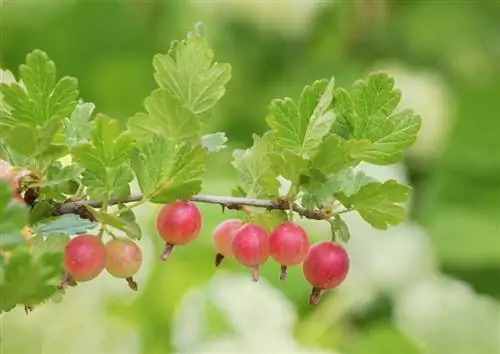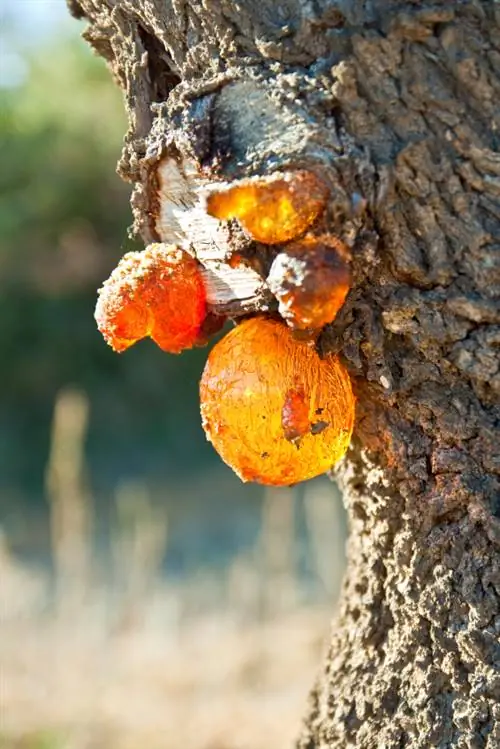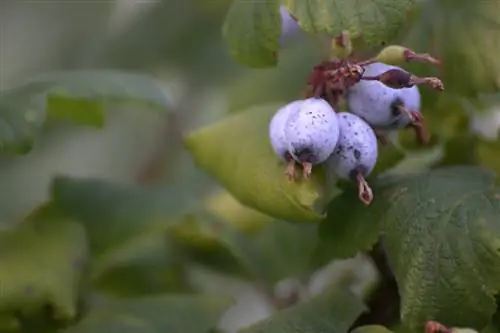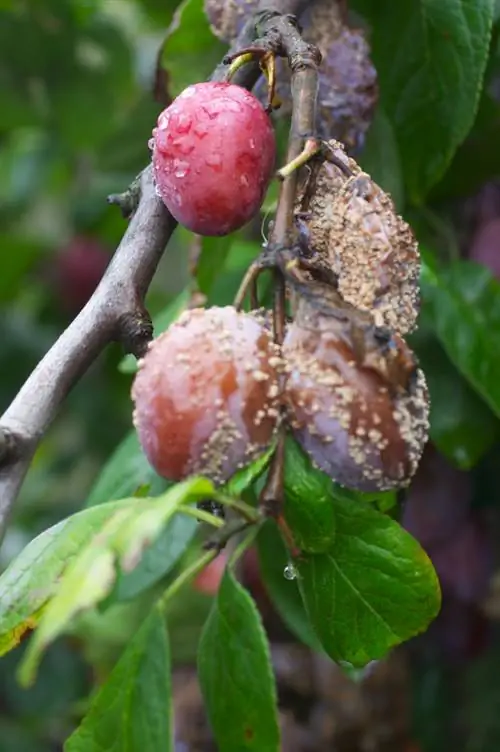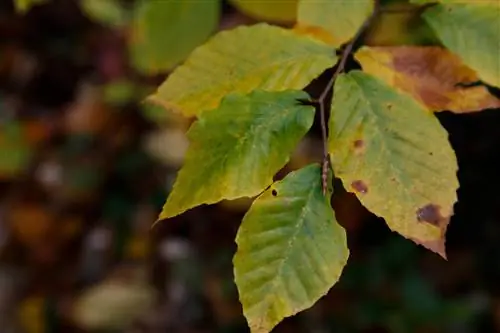- Author admin [email protected].
- Public 2023-12-16 16:46.
- Last modified 2025-01-23 11:20.
There are two diseases in particular that make life difficult for gooseberries. One lurks when the weather is nice, the other strikes when the weather is damp. You can find out what these are and how they are combated here.
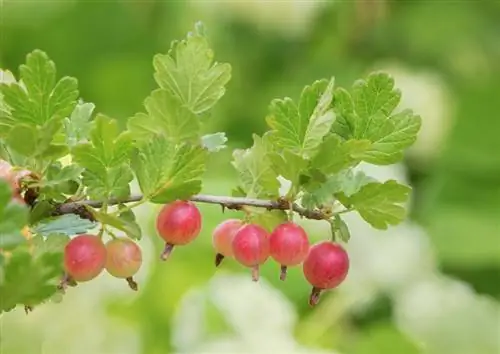
What diseases occur in gooseberries?
The most common diseases of gooseberries are American gooseberry powdery mildew, which occurs in warm weather, and leaf drop disease, which occurs in wet weather. Preventative measures include planting resistant varieties, regular thinning and pruning, and the use of biological sprays.
American gooseberry mildew
Sunny, warm summer weather is always accompanied by the threat of American gooseberry powdery mildew for gooseberry bushes. This is the widespread fungal infection Sphaerotheca mors-uvae. A mealy-white coating appears on leaves, berries and the tips of the shoots. This gradually turns brown. The gooseberries rot and the foliage dries up. How to stop the disease:
- cut off all affected shoots
- additionally shorten all shoot tips by 5 centimeters
- Do not dispose of the clippings on the compost heap
- spray with a solution of 1 tablespoon of baking soda and 15 ml each of curd soap, vegetable oil in 2 liters of water
Planting resistant gooseberry varieties such as 'Rolanda', 'Pax', 'Reveda' or 'Rokula' has a preventative effect. In addition, consistent pruning after each harvest is strongly recommended. On this occasion, all shoot tips should be trimmed again by 5 centimeters because the fungal spores overwinter here.
Leaf drop disease
Rainy weather minimizes the threat of American gooseberry powdery mildew, but still opens the door for leaf drop disease. Brown spots can be seen on the foliage, which flow into each other. The edges of the leaves turn yellow and the entire leaf cover falls off. Since no effective control agents are permitted for the hobby garden, only effective prevention can ward off the disease:
- Always plant gooseberries at a sufficient distance
- do not grow in dry, sandy, poor soil
- spray repeatedly in spring with a mix of horsetail broth and diluted nettle manure
- when fruit starts to appear, switch to onion peel tea
- don't leave any leaves under the berry bushes
- thinning regularly and cutting back after harvest
- water abundantly in the early morning when it is dry
The selection of resistant varieties has also proven successful here in order to give fungal infections no chance. The main options are 'Rolanda', 'Risulfa' or 'Rixanta'. The dark red 'Rokula' has proven to be a little vulnerable.
Tips & Tricks
Various pests have specialized in gooseberries. They are called gooseberry fly, gooseberry moth or gooseberry sawfly. In the natural garden with many beneficial insects, such as birds, hedgehogs, parasitic wasps and colleagues, pests have a bad hand. In addition, a close-meshed insect net protects each berry bush from uninvited visitors.

